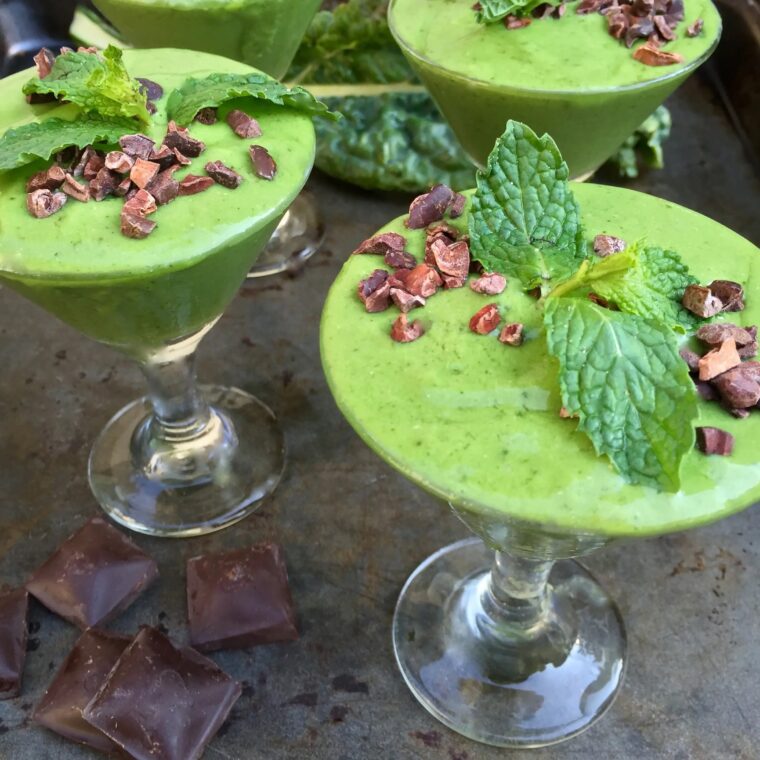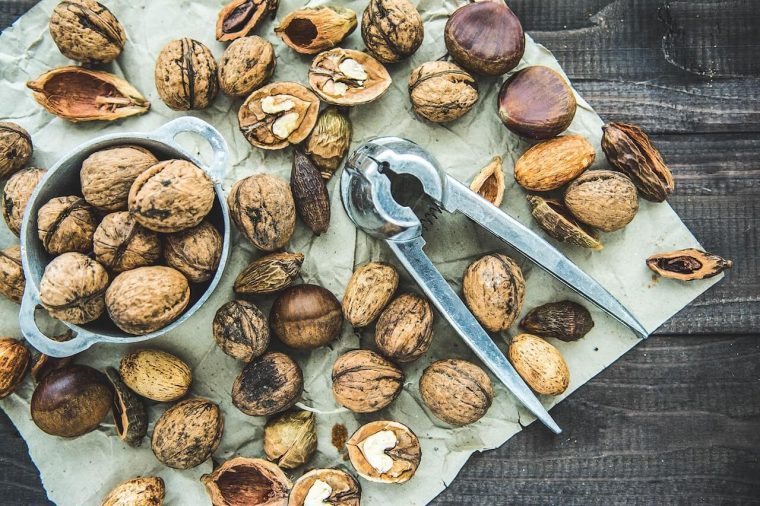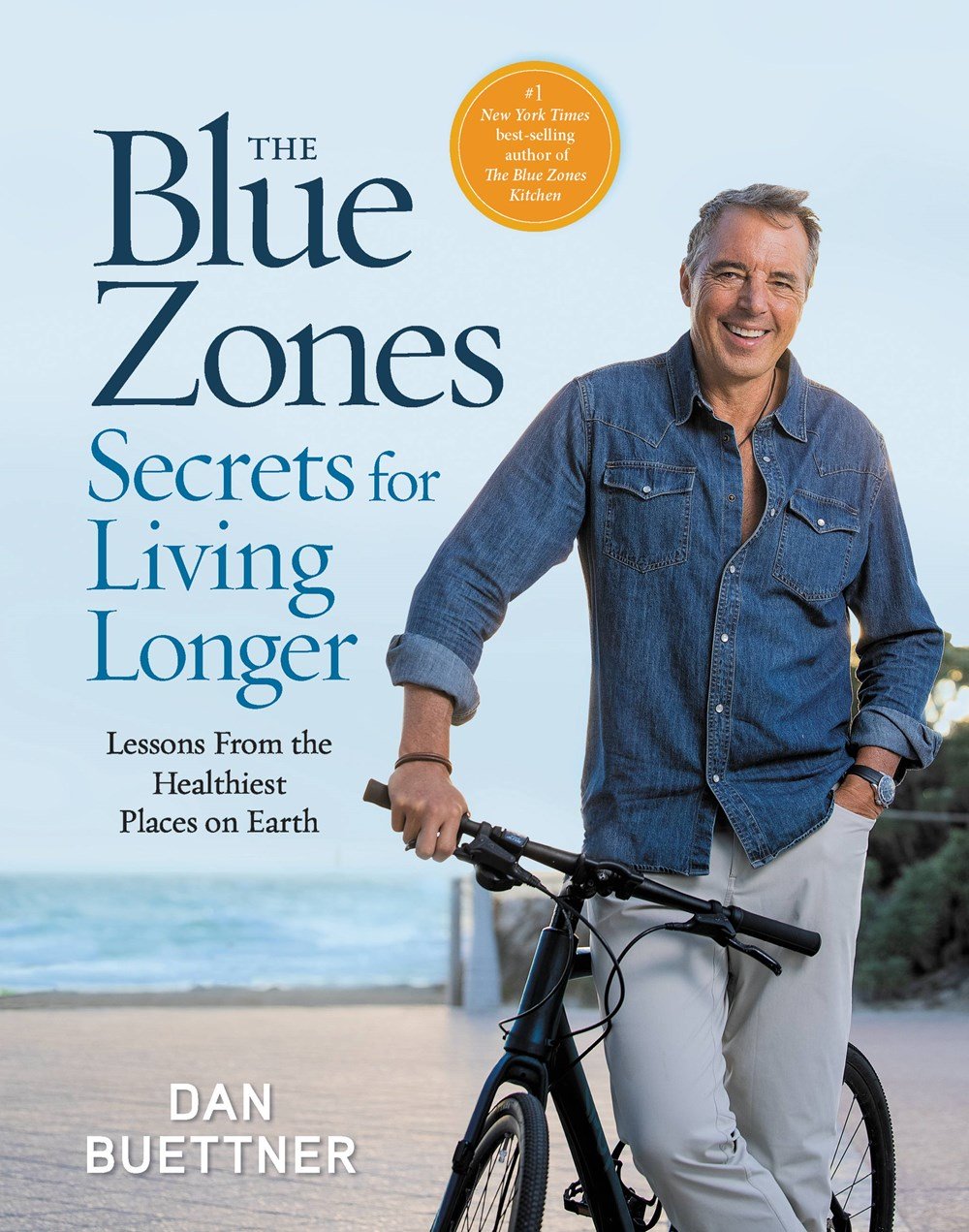Five days ago, we Americans observed one of our silliest holidays. I say “observed” because nobody really celebrates Groundhog Day—and why would we? We always have another six weeks of winter whether the groundhog sees its shadow or not. 🙄
To me, the tradition worth cherishing here is Groundhog Day, the 1993 Bill Murray comedy which Roger Ebert aptly described as the kind of movie “that you have to stand back and slap yourself before you see how good it really is.”
If you’re not familiar, the movie is about an obnoxious weatherman who is forced to live the exact same day (February 2nd) over and over and over again. He has some fun once he understands his predicament, but mostly, he’s stuck doing the same things again and again until he’s able to learn from them and become a better person.
I bring up Groundhog Day not just because it’s timely, but because it’s an excellent analogy—for the human experience as a whole and for our health pursuits in particular. It perfectly captures the feeling of being trapped in a world where nothing ever seems to change, where nothing you do seems to make any lasting difference… and this can be a maddening feeling, especially when your own mind is the world that never seems to change.
In theory, we all want to be the best and healthiest versions of ourselves. But in practice, we keep doing the wrong things (even knowing they’re wrong) and don’t quite know how to stop them from happening.
So today’s prevailing theme is repetition in human behavior, and we’ll approach this theme in a couple different ways.
First, we’ll talk more about the main units of human repetition, a.k.a. habits, and how they actually work. The picture in most people’s minds isn’t detailed enough.
Second, we’ll take a practical look at one of the kitchen’s most common repetitive behaviors (chopping vegetables) and how to speed it up and smooth it out. Just because you’ve already been doing it for decades doesn’t necessarily mean that you’re making it as easy as it could be.

People living in blue zones aren’t actively trying to cultivate habits for long life. Their environments are set up in ways that naturally support healthy behaviors. In this section of Eating to 100, I will share one simple habit you can incorporate into your life. Do it long enough, it becomes part of how you live. Build up enough of these habits, you’ll likely add years to your life and life to your years.
I hope you’ll believe me when I say that I was NOT planning in advance to talk about habits at the beginning of February. I know the topic is probably tired and sore by now!
I only decided to raise the subject at all because I found some great new source material that actually illuminates the subject of habits and how they work rather than just recycling the same clichés and platitudes.
The source material in question is the first episode of a new podcast from my neurologist friends Drs. Dean and Ayesha Sherzai. The podcast is called Your Brain On and the idea is that, in each episode, they’ll provide a neurological perspective on anything that might affect your brain. Episodes might (hypothetically) include Your Brain on Caffeine, Your Brain on Dreams, Your Brain on LSD, and so on.
They started the podcast at the beginning of this year and their first episode was Your Brain on New Year’s Resolutions—a topic which, of course, dovetails neatly into habits and behavior change. I encourage you to go listen to the whole episode—it’s a very reasonable length and chock-full of good info—and just for full disclosure, they don’t even know that I’m pointing you in their direction (not a paid plug).
For now, while I have you here, I wanted to pass along two of the episode’s big ideas about habits, how they actually work, and how we can change them:
Big Idea #1: You can’t break old habits so much as overwrite them.
The way most people think of it, there are only two kinds of habits: old habits (the ones you already have and maybe want to change) and new habits (the ones you want but don’t have yet). For today’s purposes, that dichotomy is accurate enough.
The part that isn’t accurate is the notion that old habits can be “broken” if you just hit them with enough white-knuckle willpower. You think you need to “just stop” and that that’s all there is to it, but your brain (and brain science) would vehemently disagree. You think you can just decide not to do something anymore, purely on willpower, but we all know how that story usually ends—so let’s figure out why and maybe find a better way.
To explain why you can’t just “break” old habits, plain and simple, let’s briefly examine the anatomy of a habit.
As we all know, a habit is a behavior that you consistently repeat under certain circumstances without having to consciously think about it. It’s the “under certain circumstances” part that most people don’t consider or examine closely enough.
Yes, a habitual behavior happens regularly and consistently, but it happens because it has cues—situations or stimuli that signal you to begin that behavioral routine. Habitual behaviors don’t just magically start themselves; something “reminds” the brain to start, and they’re often the sorts of reminders you can’t just turn off.
The two parts of any habit are the cue and the behavior that follows. If we’re keeping things simple, these are also the only two things you can possibly control when it comes to changing your habits—and to make things simpler still, you can’t control the cue in a lot of cases.
That brings me to the Big Idea in bold above. When I say you can’t just “break” a habit, what I’m saying is that you can’t deliberately erase a habit in its entirety because you usually can’t control all of the cues that might prompt the behavior. When such cues do come, the brain will still expect something to follow them like it has so many times before.
This is one way of explaining why it can be so damn hard to quit smoking. Simply put, smokers have tons of cues; they have temporal cues, social cues, stress cues, and a handful of others (again, many of them uncontrollable) that all compel them to light up a cigarette.
Wrapping up this Big Idea, here’s the slightly-unpacked version of how “breaking” or altering a habit can actually work, and it goes back to the only two things you can control in this context:
- Wherever possible, you exert control over the cues. You won’t always be able to control the cues, but you can control many of them more than you think. Even small adjustments to daily routines can steer you out of the way of your old cues and the behaviors that tend to follow.
- If you can’t change or remove the cue, change the behavior that follows it. I’m picturing Ben Stiller in Meet the Parents, forced to abandon his cigarette habit and chomping away at a mouthful of nicotine gum while staring at the Speedo he doesn’t want to wear in front of everybody. All kidding aside, he has the basic idea right: he’s faced with a cue he can’t control (an unexpected and unavoidable stressor) and, instead of smoking as he usually would, he does something else in its place.
Big Idea #2: The amount of time it takes to solidify a new habit is both longer AND more variable than people think.
First of all, the whole “21 days” thing is a bunch of hooey. It’s not just an oversimplification; it’s a bastardization that is, by now, completely detached from its original meaning. Namely: a plastic surgeon found that, after surgery, it takes patients about 21 days to feel normal about cosmetic changes when they look in the mirror—and while that’s an interesting finding, it has virtually nothing to do with habits or behavior modification.
With that out of the way, the first important question here: how do you actually measure how long it takes to get a habit to stick?
As Dr. Phillippa Sally explains on the podcast, researchers might ask subjects to pick a new habit they want to establish—something that they would do once a day—then each day, they will report whether or not they did the thing and how automatic the action felt at the time (perceived automaticity). For measurement purposes, a new habit is solidified when the self-reported levels of automaticity reach their highest and then plateau, as they eventually tend to.
That’s all simple enough, but the main complication, in a phrase, is that habits are all different. Even with guidance to make sure their new habits are measurable, subjects in a study like this will have different challenges in front of them and some are bound to be harder than others.
People in general face the same problem when talking about “habits” in such broad strokes. There’s no set amount of time that it takes to solidify a new habit—not only because each person is different, but because each habit is different as well.
If you really must have a bottom-line number to replace “21 days,” Dr. Lally’s research found that the grand global average was 66 days for a person’s new habit to become fully established. But I couch it that way (and I refuse to emphasize that statistic in bold) because this is definitely one of those times when averages can be misleading. Dr. Lally was very explicit on the podcast that she didn’t want that number to make headlines and soundbites, and for that very same reason.
We can safely say that “66 days” is a more realistic expectation than “21 days.” But it’s still nearly useless as a rule of thumb, or for setting blanket expectations, when the data has so much natural variance. The mean average might’ve been 66, but the range runs as low as 18 and as high as 254 because, again, it depends on the person AND the habit that person is attempting to establish.
This news might sound like a bummer, but that’s not what I would want you to take away from this. I tend to think that realistic expectations are always a form of good news; while you might not enjoy the thought that things will be even harder than you first expected, I don’t think difficulty or even failure necessarily deters most people. I think it’s failing over and over and not knowing why, and that’s what makes a faulty expectation such a damaging thing. So faulty expectations, begone!

To state the obvious, one of the big “costs” of cooking at home is the prep work—and one of the biggest prep tasks is chopping vegetables. It can be a real chore sometimes; who wants to stand over a cutting board for half an hour before they can even start cooking?
As you might expect, blue-zoners don’t tend to be in much hurry; they don’t think much about the time they spend chopping vegetables because their general attitude is “it takes however long it takes.” They tend to lean into the zen of cooking and enjoy the way that its simple tasks can focus you enough to clear your mind.
In a lot of ways, this is the ideal way to think about meal prep. But frankly, it’s just not realistic for a lot of us to devote half an hour just to chopping vegetables on a typical busy weekday.
Besides, the fact that blue-zoners aren’t in a hurry doesn’t mean they go slow on purpose. If they have knife skills (and they often do), they use them—and this often means that, through sheer repetition, they can get pretty fast without a single iota of hurry in their technique.
So today, I want to share my three best suggestions (however scattershot) for speeding up the veggie-prep process and thereby making cooking at home as easy and enjoyable as it can be.
Safety note first: most of the tools I’m about to mention can cut you, so do NOT think of any of them as “injury-proof” even when they’re meant to replace a knife. I once learned that lesson the hard way, and it’s not an experience I would want you to share.
Now then, the three suggestions for quicker veggie prep:
Suggestion #1: Use more and/or different tools that are better suited for specific cutting purposes.
You can do an amazing number of things with just a couple of versatile knives, but knives aren’t always the quickest or easiest way of getting your veggies prepped. Take, for example, peeling; you can peel just about anything with a knife, but it tends to be slower and more tedious (and riskier) than using a peeler.
Three other useful bladed (or blade-like) tools for speeding up work traditionally done by knife:
Box Grater. Really, any kind of grater or plane can work here, but I like a box grater for the grip and control, the different options on each side, and the way it captures your shreddings in the middle. Anyways, the idea here is that, for a lot of veggies, there’s not much difference between finely shredded and finely chopped—and wherever that’s the case, a box grater can make really quick work of it. The only asterisk: the more watery the interior of the vegetable, the worse shredding it tends to work (for example, carrots work great and celery does pretty good, but onions kinda fall apart).
Mandoline Slicer. This is basically the plastic board with the razor-like blade in the slot in the center, and they’re super-handy for slicing veggies thinner and/or faster than would usually be possible with a knife. They’re usually adjustable and they often come with a variety of blades so you can cut veggies into different textures.
Spring-Loaded Choppers. These are built a lot like spring-loaded ink stamps, except that there’s a series of blades where the inky rubber part would be. You place the chopper over top of an ingredient and press down so that the blades cut through, then you release and the blades pop back up—and they’re usually designed to have the blades rotate on the way back up so that they’ll cut different lines each time you press down.
All things considered, I usually just prefer a chef’s knife or one of the other tools mentioned. Results can vary, and sometimes they’re a pain to clean, but I can see how they’d be super handy for anyone lacking in manual dexterity.
I would also mention…
Certain fruit-specific devices like apple slicers and avocado slicers which, if you eat those fruits regularly, can save you a ton of trouble and a bunch of knife strokes every single time.
A garlic press. I absolutely love fresh garlic, but it’s kind of a pain to work with. Not only do you have to peel the skin (see tip below), but a clove of garlic is a small object that usually needs to be cut into really small pieces, and it’s sticky, and the aroma can linger on your skin long enough to get tiresome. So for recipes that call for minced or finely chopped garlic, I often use a garlic press because all you have to do is drop in some peeled garlic, then close and squeeze the press and (what is essentially) minced garlic comes out the other side.
PRO TIP: Peeling a clove of garlic is a pain, but far less so once you know that applying a little bit of pressure will loosen the whole thing. You can either press down on it with a utensil (like the back of a spoon or the side of a knife) or, with a little practice, you can just roll and twist it between your fingers and apply pressure until the skin “pops” off.
Suggestion #2: Wherever it makes sense, cut multiple items at a time.
There are plenty of veggie-prep situations where you could cut two or three times as fast just by being more efficient with the knife strokes you’re already making.
Take, for example, slicing carrots into coins. A typical carrot might be an inch thick; even if you have relatively small hands, you can probably hold two, three, or even more carrots in place at a time, and much the same motion that would slice through one carrot could also slice through a handful of them.
This does, of course, depend on the kind of knife you’re using. A good rule of thumb is to make sure your blade is longer than whatever you’re cutting through; a 7” chef’s knife should be able to coin three carrots at a time with no problem, but a 3” paring knife might limit you to two or even just one carrot at a time.
It also depends very much on the fruit or vegetable in front of you. For example, you can cut through a ton of celery stalks at once (their shape makes it easy to firmly nest them together), but you can probably only handle one avocado or artichoke at a time given their peculiarities.
Don’t push your limits or turn this idea into a contest—always exercise your best judgment when handling sharp objects—but do try to notice situations where the cuts you’re already making could do more work for you.
Suggestion #3: Learn the geometry of different knife cuts and combine them smartly.
This lesson applies to all kinds of vegetables, but to give you the general idea, I’ll describe one of the situations where I’m most likely to use combined cuts: chopping onions.
Most people, when they chop an onion, are essentially creating more and more separate pieces with each knife stroke—and as those pieces get smaller and more numerous, they become harder to manage with precision. Eventually you have a pile and you have to keep spreading and mixing it as you continue to work it into smaller pieces. Not only is this messy and inefficient, but the texture won’t be uniform.
The trick to chopping a half-onion using combined cuts is to first cut (specifically julienne) the whole thing in one direction without cutting all the way through. Just to give you a mental image of what I mean: take a bathroom tile (one solid object) and cut it with a precision laser until it resembles a matchbook (still technically one object, but now a collection of slices held together at one end).
Once you’ve almost-julienned the onion that way, you rotate it 90 degrees and cut all the way across your original knife strokes. What falls off the other side of the blade is a perfectly uniform dice without any further work needed—and the beauty of this technique is that you can make the dice as coarse or fine as you want just by adjusting how many cuts you make in each direction.

Mint Chip Dessert Smoothie
Ingredients
- 6 ounces of unsweetened almond or coconut milk
- 4 cups spinach leaves
- 1 ripe avocado, pitted and peeled
- 4 pitted Medjool dates
- 1 teaspoon pure vanilla extract
- 8 sprigs of fresh mint leaves (or ½ teaspoon mint extract if fresh mint is not an option)
- 2 large frozen ripe bananas, cut into chunks (peel & slice prior to freezing)
- 2 tablespoons chocolate chips or cacao nibs
The Method
- Place plant-based milk and spinach in a high-speed blender and blend.
- Next, add pitted dates and mint leaves and blend. Toss in the remaining ingredients (except chocolate chips or cacao nibs) and blend until mixture is smooth, thick, and creamy. Add ice if necessary.
- Use a spoon and mix in chocolate chips, then dish into small bowls.






